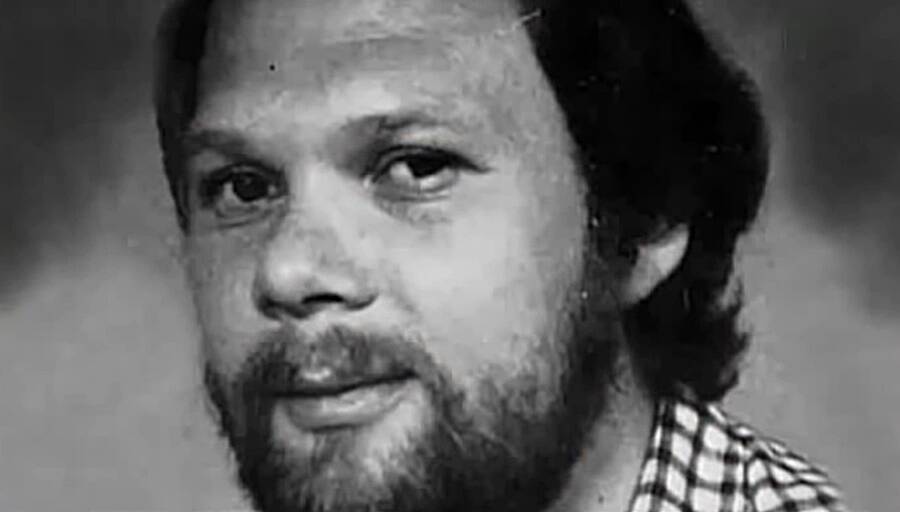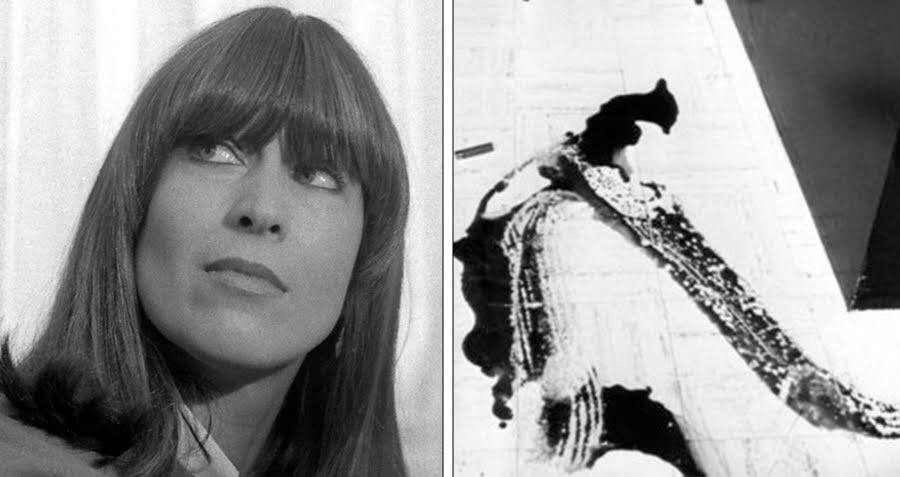Marianne Bachmeier was a single mother living in Lübeck, West Germany. Her life changed irreversibly on May 5, 1980, when her 7-year-old daughter, Anna, went missing after a disagreement. Instead of going to school, Anna reportedly left for a friend’s house but never arrived. When she failed to return, her family reported her disappearance to the police. Investigators quickly identified Klaus Grabowski as the primary suspect—an individual with a prior criminal record.

The Crime Committed by Klaus Grabowski
Klaus Grabowski, 35 years old at the time, was a convicted sex offender with a history of abusing minors. He had previously been sentenced for the sexual abuse of two young girls. While in prison, he voluntarily underwent chemical castration but later attempted to reverse the effects through hormone treatments.
On the day of Anna’s disappearance, Grabowski lured her into his home. According to his confession, he strangled the girl using his fiancée’s tights. He then placed her body in a box and hid it near a canal in Lübeck. Later that same evening, his fiancée reported him to the authorities, leading to his arrest. The police subsequently recovered Anna’s body.
Grabowski admitted to killing Anna but denied sexually assaulting her. In his defense, he claimed the girl had tried to blackmail him—an argument the court rejected due to lack of credibility.

The Courtroom Shooting
On March 6, 1981, during the third day of Grabowski’s trial, Marianne Bachmeier entered courtroom 157 of the Lübeck District Court. She had concealed a .22 caliber Beretta pistol in her handbag and managed to pass through security undetected. As the trial began, she pulled out the weapon and fired eight shots at Grabowski, six of which struck him. He died instantly at the scene.
Bachmeier made no attempt to flee. After the shooting, she placed the gun on the floor and waited for the police. Witnesses reported that she expressed no regret and stated that she hoped Grabowski was dead. Her actions were spontaneous in appearance, but questions later arose about the degree of planning involved.
Legal Proceedings and Sentencing
Initially charged with murder, Marianne Bachmeier’s legal team argued that she had acted in a state of extreme emotional distress. Psychological assessments presented at trial supported this claim, noting the profound trauma caused by the loss of her only daughter.
On March 2, 1983, the court convicted her of manslaughter and unlawful possession of a firearm. She was sentenced to six years in prison. However, due to good behavior, she was released after serving three years.
The court’s decision considered her mental state and the extraordinary emotional burden she carried at the time of the shooting. It did not classify the act as premeditated murder under German criminal law, which permits lesser charges under mitigating circumstances.
Public and Media Reaction
The case attracted widespread national and international media coverage. Bachmeier was seen by many as a symbol of maternal love and justice. The emotional context of the crime led to significant public sympathy, with many letters and gifts sent to her while she was in custody.
However, the media later scrutinized her personal life. Reports revealed that she had given up two children for adoption as a teenager and worked at a pub—details some outlets used to challenge the public’s perception of her as a devoted mother. This shifted public opinion, leading to a divided response.
According to a survey conducted by the Allensbach Institute, 28% of respondents believed the six-year sentence was fair, 27% felt it was too harsh, and 25% thought it was too lenient. These figures reflected the national debate over her actions and the appropriate balance between justice and empathy.

Life After Prison
After her release in 1985, Marianne Bachmeier left Germany and lived abroad. She married a German teacher and reportedly resided in Nigeria before moving to Sicily, Italy, following her divorce in 1990. There, she worked with a hospice and lived a relatively private life.
In the early 1990s, she was diagnosed with pancreatic cancer. As her condition worsened, she returned to Lübeck to be close to her remaining family. On September 17, 1996, Marianne Bachmeier died at the age of 46. She was buried next to her daughter Anna at the Burgtor Cemetery in Lübeck.
Ongoing Legacy and Debate
More than four decades later, the Marianne Bachmeier case remains one of the most controversial examples of vigilante justice in postwar Europe. Her story continues to be discussed in legal and academic circles, often cited in debates on moral justice versus legal due process.
Supporters argue that she acted out of unbearable grief and that her punishment was already the loss of her child. Critics contend that no individual should be allowed to take the law into their own hands, as doing so undermines the legal system’s foundations.
The case also highlighted the legal and ethical complexities surrounding repeat offenders, especially in crimes involving children. It raised difficult questions about the adequacy of legal protection for victims and the emotional toll on surviving family members.

Final Reflections
Marianne Bachmeier’s story is not only one of violence and tragedy but also one that challenges the boundaries of justice, grief, and personal responsibility. While her actions were clearly unlawful, they were also profoundly human. She accepted her punishment and served her sentence, never denying her role or blaming others for her decisions.
Her case remains a powerful reminder that the criminal justice system, while essential to social order, may not always offer comfort or closure to victims’ families. The emotional weight carried by grieving parents like Marianne Bachmeier cannot be understated, nor can the broader societal implications of vigilante acts.
Though opinions about her actions differ, few would deny the emotional impact of her story or the moral complexity it represents. It continues to resonate with people across generations, not because it presents easy answers, but because it forces us to confront some of the hardest questions about justice, loss, and human nature.

Sources:
-
Wikipedia – Marianne Bachmeier
-
The Line-Up – Courtroom Vigilante: Marianne Bachmeier
-
All That’s Interesting – The Mother Who Shot Her Daughter’s Killer
-
Magzentine – Biography of Marianne Bachmeier
-
Histrospect – Why a Mother Shot Her Child’s Killer
